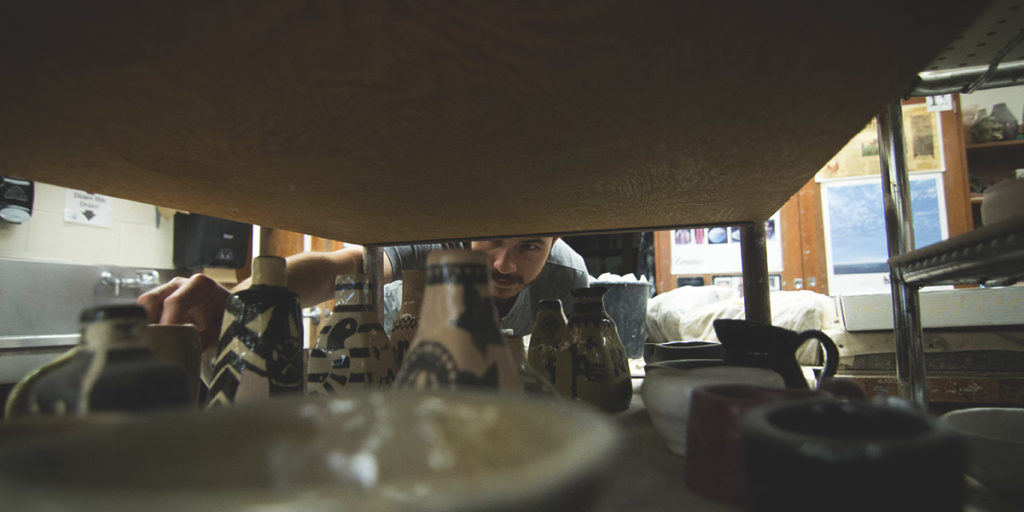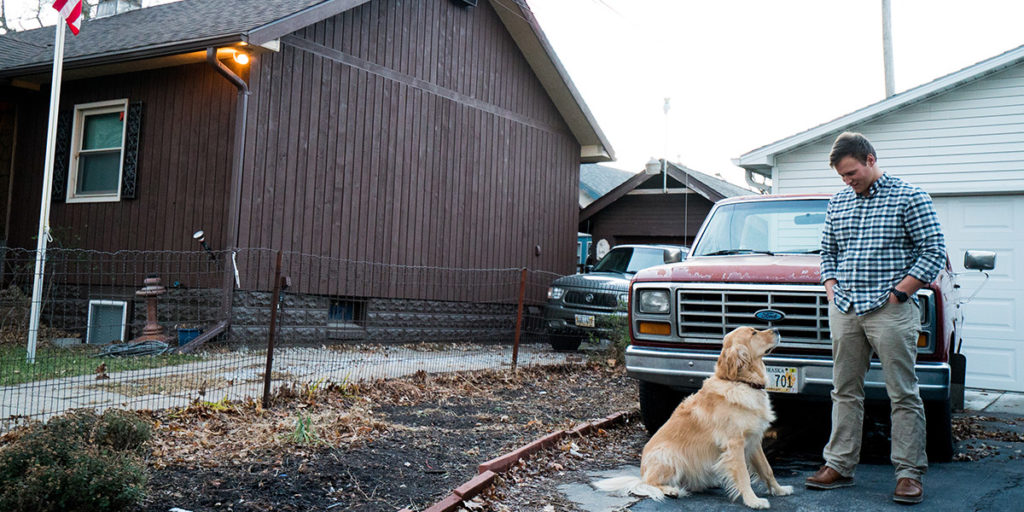
Alex Kolbo is one of those ‘cool’ teachers. He’s young, fun and he teaches high school art.
Most days there are a few students who hang out in his art room before or after school to work on projects or just to talk with Mr. Kolbo about whatever is on their mind.
Being an art teacher is a job that feels natural to Alex. It tracks well with this own love of all things artistic, plus, it’s relational, which is something he didn’t know would quickly become the best part of his job.
But Alex never saw himself as an art teacher. In fact, ever since first grade all he really wanted to be was an architect.
As a kid, Alex was always drawing. It was a hobby that was encouraged by his parents, teachers and nearly anyone who saw his work. He had talent, but he was a little shy to admit it. He remembers refusing to take compliments when people would look at his artwork. Then his dad sat him down and had a conversation about being grateful for his abilities and taught him how to accept encouragement from others.
But even though he was talented, Alex said he never thought about being an artist. He thought the more practical route would be architecture, because it combined his artistic skills with his math abilities… and he’d heard that architects earn a good living.
Architecture wasn’t just what Alex planned to do, it’s what he told everyone he would do – it was his identity. So when he went to college at UNL as an architecture major, nobody was surprised.
After two years of having a love-hate relationship with architecture – which Alex now fondly refers to as ‘archi-torture’ – he hit a major roadblock. While he enjoyed his classes, the math portion of his degree was proving extremely challenging, specifically his calculus class. He needed to pass calculus with a C or higher and after taking the class three times he was 1 percentage point away from passing the class.
He had two choices: take the class a fourth time and hopefully pass so that he could continue with his architecture degree, or change his major.
Alex went home for the weekend to think over his decision. He said it felt heavy and even a little sad to have his once certain future suddenly full of question marks. Alex met with friends and a handful of trusted mentors who listened to his dilemma and offered advice. He said the most common question everyone asked was, ‘Have you ever thought about teaching art?”
Teaching? Interesting, he thought.
But then came the list of questions and hesitations, the main one centering on if he could provide for his future family on a teacher’s salary. Plus, being a teacher didn’t seem nearly as glamorous as his architecture aspirations.
He was shocked by the fact that so many people had suggested the same career shift, but now the decision was up to him. Within a week Alex changed his major, ending his time at the architecture school and starting down the teaching path.
It’s been nearly seven years since Alex made the decision to become a teacher and he’s currently finishing up his fourth year at Lincoln East High School. He landed the job shortly after he graduated, and quickly found that teaching felt like such a natural use of his passions and skills.
“I love making art, it’s fun, but that alone hasn’t been the most meaningful part of my job,” he said. “It’s the building relationships, and I didn’t realize that would make me feel like this is where I’m meant to be.”
Whether he’s teaching pottery, photography, graphic design or even jewelry making, Alex said his goal is to connect with students and help them think creatively. He said creative thinking isn’t just for art, it’s for life, and art is the tool he’s using to teach his students these skills.
Alex knows that not every kid who walks into his classroom is thrilled about taking an art class. They don’t all have to love or even appreciate art, he said, but he wants them to know that he’s a teacher they can trust and learn from, whether it’s art or something from his own story.
Alex said teaching is something he can see himself doing for a long time. It gives him his own time and space to think creatively, plus it pairs well with his endeavors outside of the classroom. On weekends and during the summer he likes to take wedding and engagement photos, help his wife, Machelle, with her graphic design business, think up art-inspired Instagram posts, go on walks with their golden retriever and hang out with kids in his church’s youth group.
Nearly everything Alex does turns into some sort of exercise in creative thinking. It’s what he loves, what he’s passionate about and what naturally rises to the surface of both his work and hobbies.
It’s seems funny to think of Alex as being anything other than an art teacher at Lincoln East. It’s where he’s invested his skills and his time. And even though Alex is at the front of the classroom, it’s really his students who have shaped his story and encourage him to test his own creativity every day.

